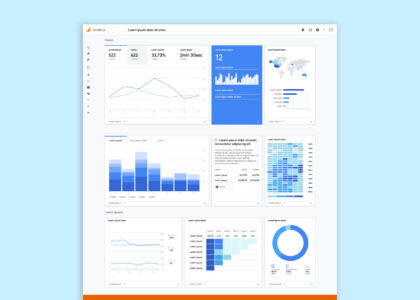What is organic click through rate?
Organic click through rate (CTR) is the percentage of users who click on your website URL after a Google (or any other search engine) search.
For example, if one of your webpages appears in search results 100 times and you have 6 people click on your website, your organic CTR is 6%.
Why is it important?
Organic CTR is very important. A good CTR will improve your SEO and increase the traffic to your website from search engines like Google.
Even if your site ranks first in a Google search, that isn’t a guarantee someone will click on your site. And then, there are still ads and shopping feeds competing for the attention of your potential customers.
So, what can you do to increase the number of clicks on your website? Here are 8 ways to improve your organic CTR!
1. Long-tail keywords
Long-tail are very descriptive, and when you include these keywords in titles tags and headings on your website, your website content is more likely to match search results.
If customers see specific keywords they’re looking for on your URL, there is a higher chance that customers will click the URL for more information.
Our marketing team at Creative Coco’Nuts can help you choose the best long-tail keywords to use for your business.
2. Find out what your lowest CTR content is
It’s important to know what’s not working so you can change up your marketing tactics and bring in successful results.
Software like Google Analytics tracks your average CTR so you know exactly what’s going on.
Once you know your average CTR, you can go through the queries section on Google Analytics. Watch for the queries that have a click rate that is less than your average CTR. These are the ones that need improving.
Our team can help determine what isn’t working, and how to bring that percentage back up to or above your average CTR.
3. Scope out the competition
It’s likely that your competition is optimizing similar keywords to your organization. This spreads the organic CTR very thin, and drastically reduces the amount of organic clicks your website will get.
Again, specific keywords are the solution here. It might be worthwhile to consolidate your keywords so that your CTR is dedicated to a few pages, rather than spread across a dozen.
4. Creativity (number lists)
Want to draw attention to your brand without diving into keywords? Get creative!
Try including a call to action or something humorous. Just don’t overdo it by including three puns in the same sentence.
Having numbered lists and including the current year in your titles are also a great way to increase clicks.
5. Meta descriptions
Meta descriptions are the short excerpts of text that appear under your title tag on the search engine results page. It’s important to make sure that the information you include is a good summary of your page and persuasive enough that it encourages customers to click the link.
There are only 160 characters available, so be specific, relevant, and persuasive. Try to answer any questions you think customers may have.
6. Images
Including images is not only more engaging, but it can also improve your organic CTR! If you include an image, your images or graphics could even be featured in the snippets section at the top of a search results page, increasing your credibility and attention given to your website.
7. Descriptive URLs
Don’t overlook the keywords you use in your URL. Your URL is an important source of information that helps customers decide whether or not to click on your site.
First of all, try to keep your URL as short as possible. This may seem counterintuitive, but it will increase your credibility and be more aesthetically pleasing as well.
And secondly, only include keywords that are essential to the topic covered on the web page. This will show customers that your content is relevant.
8. Emotion
Again, you don’t want to go over the top and make your information sound like clickbait, but the occasional “amazing” or “proven” can go a long way to enticing customers to click on your site.




